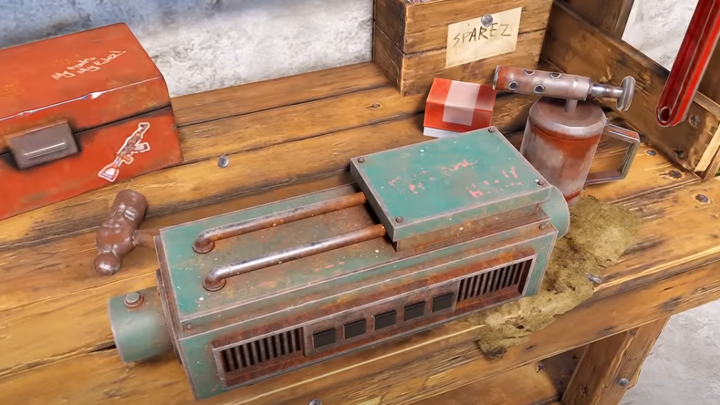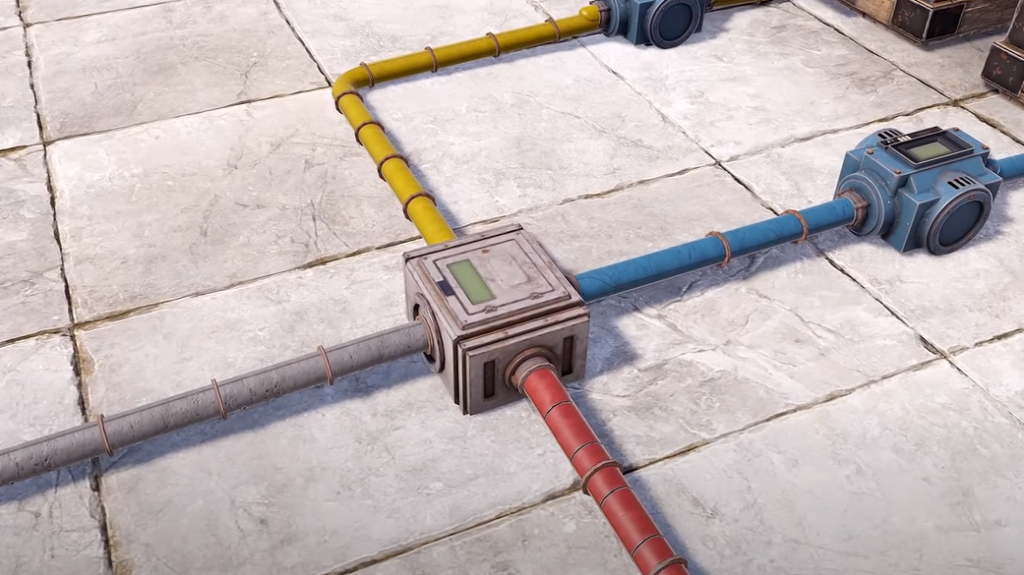Are you looking for the best way to automate your base in Rust? Then the Industrial Crafter and Splitter are precisely what you need! So continue reading and learn to ascend to mastery in the industrial age. This guide will detail everything to know about the Crafter and Splitter in Rust, unveiling their secrets and uncovering how they can supercharge your base. Specifically, we'll explain how to unlock unparalleled efficiency and use them in Rust. So, without furth ado -- here's what you need to know.
How To Get & Use The Crafter In Rust
The Industrial Crafter in Rust is placed on a Workbench and requires a blueprint for the desired item. Obtain blueprints by researching the item at a Research Table with scrap. Then, to begin production, place the blueprint and all the necessary materials inside the Crafter, ensuring it is powered. You can access input and output nodes using the pipe tool for raw materials and crafted items.
The blueprint in/out node facilitates the automatic transfer of crafting blueprints. With the wire tool out, players can access the primary "power in" node along with "turn on," "turn off," and "toggle" nodes. The Industrial Crafter can be crafted at a Level 2 Workbench with a Tech Tree cost of 970 scrap. While manual crafting is faster, the Industrial Crafter operates non-stop, transforming your base into a chosen productivity factory.
How To Get & Use The Splitter In Rust
The Splitter can be crafted at a Level 1 Workbench with a Tech Tree cost of 230 scrap. The Industrial Splitter in Rust allows players to branch a single pipe into three new pipes without requiring power, proving particularly valuable for filtering items within the same container to different destinations. When connected, the Splitter will always prioritize sending items through the node with the lowest number whenever possible.
With a Conveyor's maximum transfer of 32 items per stack, the Splitter divides the transfer based on the number of connected output nodes. For instance, if an input crate of 10x stones is linked to three outputs, it will send all the stones to the crate connected to Output 1. If there are 20x stones, it will split 10x stones each between Outputs 1 and 2, respectively. In the case of 30 stones, it will distribute 10x stones to each of the three crates.
That being said, you can configure your Splitters to create a streamlined and highly automated base. As a result, the Splitter in Rust proves invaluable and unlocks numerous advanced applications when combined with Conveyors and Crafters. And that completes our guide on how to use the Crafter and Splitter in Rust. All images featured in this guide are courtesy of YouTube / Jfarr.
For more Rust news, be sure to check out our dedicated section or take a look at some of our Guides & Tutorials just below:
- Beginner’s Guide & Tips to Get Started |
- Where to Find Keycards in Rust |
- How to Fly Minicopter and Best Training Server |
- How to Use Rf to Detonate C4 |
- How to Use the Crafter & Splitter |
- How to Get & Use Conveyor |
- How to Craft & Use Electric Furnace |
- How to Get Gunpowder |
- How to Get Ptz CCTV |
- How to Craft Drones |
- How to Craft Sleeping Bag |
- How to Get Cloth |
- How to Setup Traps & Turrets |
- Vending Machines Guide: How to Build, Defend & Placement Locations

 No ads, our video library,
No ads, our video library,



